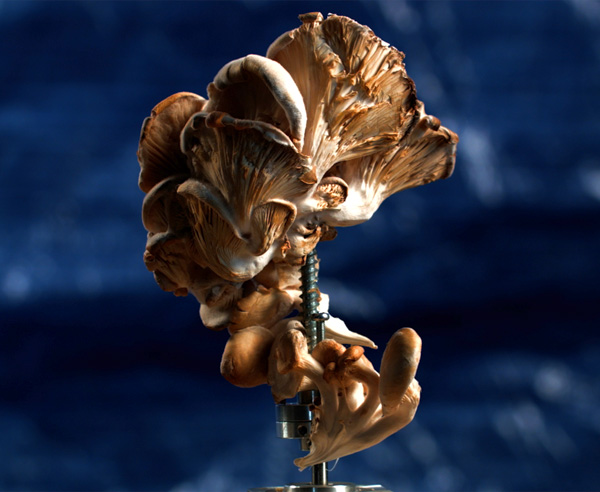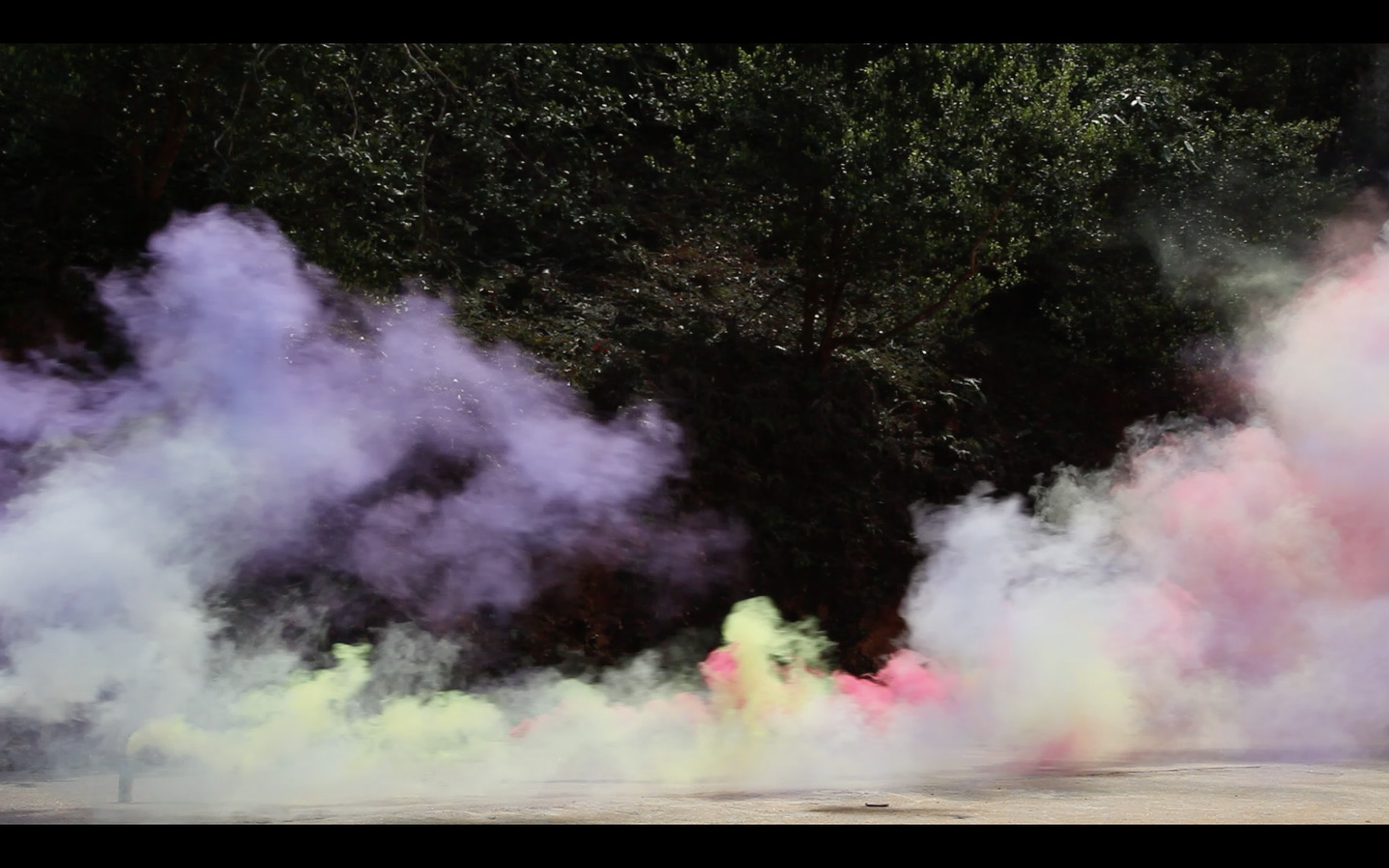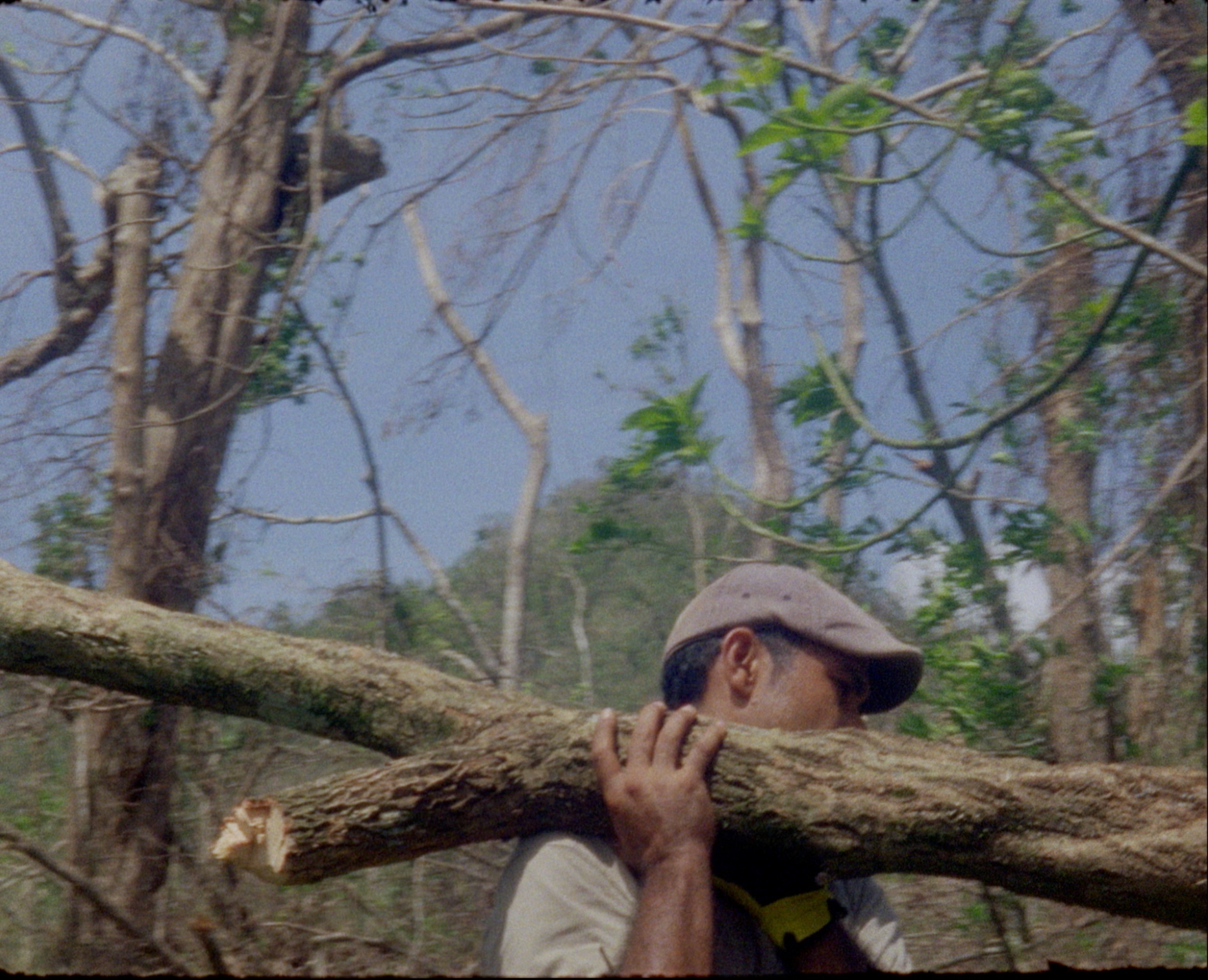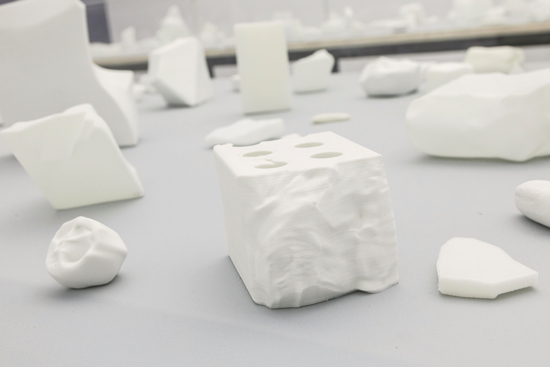
October 28-December 7, 2019
Curated by Christine Shaw
Click here to download the micropublication featuring a
curatorial essay, exhibition infromation, biographies, and full colour illustrations throughout.

Logics of Sense
Although the worlds we inhabit are invariably composed of sensations and sense-makings, it is a peculiar challenge to perceive ourselves sensing. Because our human-centred sensory habits are so difficult to discern, we can often mistake them for natural tendencies. As an attunement to the aesthetics of sensation, the exhibition Logics of Sense—presented in two parts at the Blackwood Gallery, University of Toronto Mississauga—examines sense-in-the-making, from the surface of incorporeal events to a multiplicity of decentralized perceptions, and from itinerant geo-methodologies to the various disciplinary frames and frameworks that artistic intelligence retrofits for emergent social and political realities.
Logics of Sense 1: Investigations (September 4-October 19, 2019) includes works from Ursula Biemann, Mikhail Karikis, Susan Schuppli, and Jol Thomson; their respective videos and video essays address the interactions between land and the atmosphere, changing planetary dynamics, terrestrial micro-events, and the inheritance of knowledge. Moving through modes of prediction, observation, expression, perception, and re-configuration, visitors are invited to explore the becoming-sensuous of technoscience in formation.
Logics of Sense 2: Implications (October 28-December 7, 2019) includes works by Revital Cohen & Tuur Van Balen, Beatriz Santiago Muñoz, Miles Rufelds, and YangMing. Among their videos and sculptures, visitors are implicated in both seeing like a state and sharing in ecological complicity through colonial pasts and capitalist futures. As geopolitical backstories unfold to reveal an entropic obsolescence of objects, a storm builds toward the moment of its explosive release.
Two channel video with sound, 10 min.

The footage used in Dissolution (I Know Nothing) composes a form of seascape, assembling fragmented connections through material and time from Congo, Rwanda, and Nigeria through the Indian Ocean on a containership to China. Gunpowder, dissolved minerals, blinking LEDs, personal and colonial histories. All that is solid melts into flow.
16mm and HD video transferred to digital, with sound, 10 min.

I have to go inside the auditorium / and tell the story of humanity / with the five objects left over after the storm.
On September 20, 2017, one of the most violent storms ever to hit the Caribbean made landfall on the island of Puerto Rico. The storm, the likes of which Puerto Ricans had never experienced, gathered in intensity before tearing through the Dominican Republic and the US Virgin Islands, ending in Puerto Rico. Those who survived the storm were bound to the hell of its aftermath. Food and water shortages were pervasive throughout the island, power was virtually wiped out, hospitals were closed because of extensive damage, and basic services all but collapsed. Gosila is not about the hurricane, but was made through it, through the light that possesses life after a disaster. A light that affects the senses, as the hurricane did, a light that does not “tell” or “show” but instead seems thick, merged with air. Beatriz Santiago Muñoz’s films have always been observational, and this work observes history happening through the elements of nature. The storm relates to colonialism, the weather to the actions of blind power in oblivion about the future. The light lightens the injuries, darkness is not the enemy, darkness is another name for intimacy, for shelter...
It is the unchanged minds of humans who are unable to see themselves as one with all forms of life, unable to see that we are not being poisoned, exhausted, and exterminated alone but along with the plants, the animals, the ground, the soil, the stones, the waters. Don’t call the storm a result of climate change. We love to use the word change; it entertains our vanity. The experience through this agony of life is not change, but a huge boundary between our actions and all forms of life, between thinking and doing, between our greediness and the conditions that may assure the coexistence of all, here.
HD video with stereo sound, 32:27 min.

Two or Three Saprophytes is a video essay that traces a speculative history of the industrial revolution, its ecological backdrop, and its legacy of technological, scientific, and economic thinking built around accumulation and "progress." Breaking from strictly didactic or documentary forms, the film refracts its factual historical research through a hallucinatory, narrative lens, mixing reality and fiction to frame the interconnected histories of mushrooms, trees, coal, chemicals, machines, and capitalists as a kind of ecological ghost story.
Visual and verbal motifs of circles, spirals, hexagons, and “revolutions” punctuate the film, sketching associations and contrasts between historical movements, economic patterns, rotational pistons, chemical diagrams, and ecological balance.
Posing a counter-model to industrial capital’s destructive obsession with growth, the film looks to the earth’s legion of decomposing mushrooms as protagonists, arguing for a thinking in which growth and decay are granted equal importance. Informed by Marxist ecological criticism and Gothic horror fiction as much as by scientific and historical research, this film proposes an alternate narrative to familiar ideas of progress and ecology in the post-industrial world.
Inkjet print on vinyl; HD video with pictures from the Internet; 3D scanned and printed objects, ABS photosensitive resin, variable sizes.

Street demonstrations triggered by various political upheavals around the world have led to numerous conflicts between protesters and police. Against an ever-increasing militarized response by so-called “authorities,” the weapons used by demonstrators in these confrontations are most frequently the ubiquitous debris of the urban landscape: cobble stones, broken bricks, and concrete fragments from the dilapidated streets, buildings, and monuments of contemporary cityscapes. This rudimentary detritus, in the hands of a public under attack in asymmetrical urban conflict, become objectiles for self-defence and contestation.
The term stone pelter—referring to “people who throw stones”—has become a part of the current vernacular to describe street protestors who appropriate these geological ephemera during urban demonstrations, protests, and riots, and through their energetic release, convert them into new weapons. Can these sites of uneven, uncivil conflict therefore be described as Stone Wars? If so, although the Stone Wars do not cause excessive casualties, they nevertheless drain opponents’ combative power, making it more difficult for them to maintain forms of repressive control.
Reflecting on political resistance and upheaval through these moments of stone warfare, YangMing uses 3D scanning techniques to reconstruct models from photos and videos of protest objectiles found on the internet, and then renders them in vivid sculptural material to reproduce the form of found weapons with 3D printing technology. The display of this array of re-captured protest ephemera conjures an oblique sense of the built environment, shifting attention to the mundane debris of the city as a way of reconsidering the affordances of urban inhabitation and militant resistance.
Revital Cohen and Tuur Van Balen work across objects, installation, and film to explore processes of production as cultural, personal, and political practices. Their work was recently shown at the Renaissance Society in Chicago; Serpentine Cinema, London; Fotomuseum Winterthur; Para Site Hong Kong; Thyssen-Bornemisza Art Contemporary Vienna; Haus der Kulturen der Welt in Berlin; Museum of Contemporary Art Tokyo; and Congo International Film Festival. It has been collected by the MoMA, New York and M+ Museum in Hong Kong. They work and live in London.
Miles Rufelds is an artist, writer, and researcher based in Toronto. He holds a Master of Visual Studies in Studio Art from the University of Toronto, and a Bachelor of Fine Arts from the University of Ottawa. Rufelds’ interdisciplinary projects weave images, videos, documents, and objects with experimental narrative structures. His works use artistic platforms as sites to explore stories connecting the tightening holds of corporate or military power to the histories of ecology, science, industry, food, film, and aesthetics. He’s exhibited in solo and group exhibitions, as well as screening programs and lecture series’ nationally and internationally, including recent exhibitions at the Art Museum and Bunker2 in Toronto, SIM Gallery in Reykjavik, Roman Susan in Chicago, and an upcoming solo exhibition at PAVED Arts in Saskatoon.
YangMing’s work often explores “space shaping”—combining images, videos, and bodies which shape an overall scenography in order to reflect on interactive relationships: between people, people and society, people and the world, people and art. Creating projects that function as games and prompt attention to real social and political situations, YangMing nurtures an interest in comprehensive thinking on specific social events. Often, he achieves this through the transformation of tiny things in different media and space and time, believing that the tiny things behind daily events can reveal their nature. Living and working in Beijing for more than ten years, YangMing is now based in HangZhou and Berlin.
Beatriz Santiago Muñoz is an artist whose expanded moving image work is entangled with Boalian theater, experimental ethnography, and feminist thought. She tends to work with non-actors, and incorporate improvisation into her process. Her recent work is on the sensorial unconscious of anti-colonial movements, and on everyday poetic work in the Caribbean. Recent solo exhibitions include: Gosila, Der Tank, Basel; Nuevos Materiales, Museo Amparo; Safehouse, Sullivan Galleries, A Universe of Fragile Mirrors, PAMM, Miami; Song Strategy Sign, New Museum; La Cabeza Mató a Todos, TEORética, San José, Costa Rica. México D.F. Her work has also been included in numerous group exhibitions and biennials worldwide. She has received the Herb Alpert Arts Award, she was 2016 USA Ford Fellow, and received a 2015 Creative Capital visual artist grant for a film-in-progress titled Verano de Mujeres.